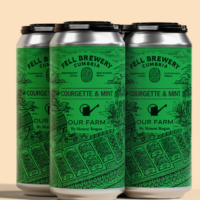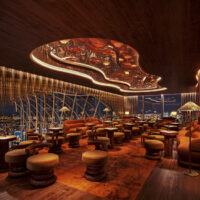Emblematic grape

So, pale pink berries in the shadow of Mount Fuji, grown with painstaking attention to detail, and producing something that’s delicate, fresh and with a touch of umami – one can imagine why Japanese Koshu should become emblematic of this nation’s fast-emerging wine industry. It’s also why drinkers from around the world should be so intrigued.
And there’s more to entice consumers. Koshu comes in a range of styles, ensuring it matches different tastes, and rewards exploration. Some of this diversity relates to particular sites, where certain aspects and soils – particularly if they are free-draining – produce wines of great intensity and individuality. One of these is the Misawa vineyard in Akeno, where celebrated Koshu producer Grace makes the most of high altitude – coupled with, unusually, vertical shoot position training – to produce a remarkably intense, peachy Koshu. Another, the Isehara vineyard from brilliant Koshu producer Katsunuma, yields a sought-after example bursting with pink grapefruit, not unlike a top-end Sauvignon Blanc from the Loire.
However, much of the most obvious variations in Koshu wine style comes from practices in the cellar. As mentioned above, lees contact can be used to build in a bready complexity, as well as more texture to the naturally light-bodied wine, and with great success – much like the techniques used in Muscadet with the delicate Melon de Bourgogne grape.
Barrel fermentations and ageing, including new oak, albeit in low proportions, can yield surprisingly successful results with this subtle variety. The peanut character derived from high-quality barriques seems to marry well with the lemon and stonefruit flavours of Koshu, in the same way sweet oak complements ripe Sauvignon Blanc in Bordeaux. Grande Polaire produces a successful example, but in my view, the ultimate barrel-influence Koshu comes from Katsunuma Winery – called Aruga Branca Pipa. To carry with the oak-sourced flavours, this producer freezes the grapes to concentrate the peach and grapefruit notes in its best Koshus.
But it’s not just isolating particular plots or playing with lees and oak contact in the cellar that yields different expressions of Koshu. Some of the most notable wines come from extended skin contact – Koshu produces particularly good ‘orange wines’, coming in a range of hues, from light amber to egg-yolk coloured, cloudy wines. Gently grippy, often with aromas of smoked tea leaves, these are complex, versatile expressions that are gaining popularity in Japan, where there is a strong demand for ‘low-intervention’ wines (more so than organic or biodynamic certified products). Mercian and Lumière make particularly good skin-contact Koshus.
A further interesting and refreshing use for Koshu is in the creation of sparkling wines. Lumière crafts a delicious traditional method fizz with the grape, with the persistent mousse augmenting the citrus freshness of Koshu on the palate. In short, there’s almost nothing that Koshu makers haven’t tried, with the new wave of winemakers now also looking to make Koshu with no added sulphur, as well as trialling new fermentation vessels, from concrete eggs to amphorae – yes, the experiments common in the cellars of Western Europe are also to be found in this far-Eastern outpost for winemaking.
It’s not just curiosity that is motivating Japanese Koshu producers, whose spiritual home is Yamanashi, to try new things with this grape. They are driven by a desire to create wines that will pair successfully with the full range of flavours in Japanese cuisine, from the extremely delicate to the strong and challenging. One aspect that’s clear, however, is the brilliant combination of the salty citric nature of Koshu and Japan’s raw-fish-based food.
This may be by accident, rather than design, but it is real; the tangy Koshu wines enliven the palate after sashimi, preparing the mouth for a dashi dish, or cutting through the residue of sticky rice in sushi. The Koshu helps with the consumption of such food, and the salty character of the dishes elevates the Koshu, bringing out more intensity.
And the likes of sparkling Koshu is an ideal accompaniment to the more subtle styles of raw fish-based Japanese food, where traditionally promoted wine matches such as oily Pinot Gris or aromatic Gewürztraminer would overpower such cuisine. However, where the much more powerful dashi-flavoured fare is on offer, requiring something weightier, one can opt for a Koshu expression with extended lees-contact or some additional skin contact.




